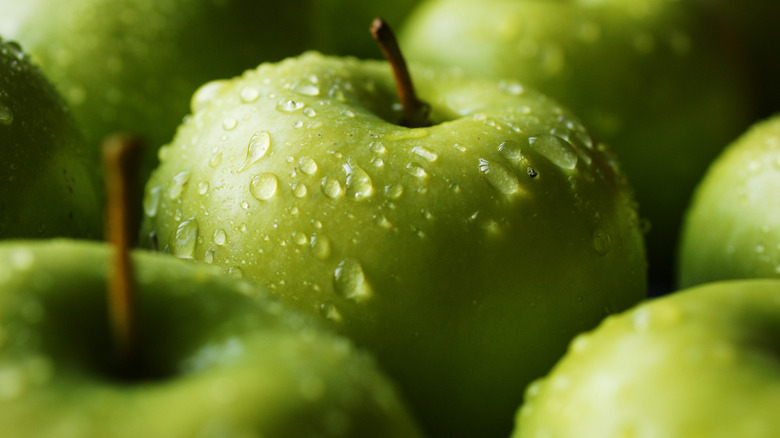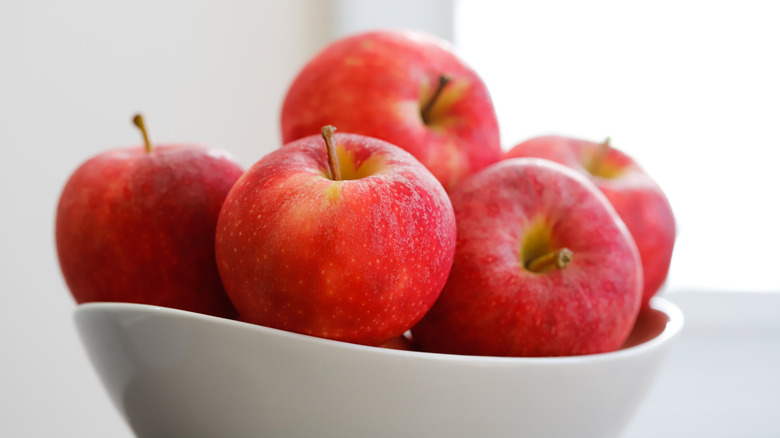When Picking Apples, Checking Out The Stem Is Key
Apples are a dime a dozen at the grocery store, so how can you ensure you're making the right choice? One key detail to look out for is a brown stem, which helps identify the sweetest and ripest apples. It's easy to overlook, but the color of the stem indicates whether the fruit is ready to eat, or if it was harvested a little too early. The stem acts as the pathway for nutrients from the tree to the fruit. While the apple is still maturing, the stem will be green. When it turns brown, it shows that the apple has reached its prime and is ready, or nearly ready, for harvest.
Additionally, when you're apple-picking at an orchard, the apple should come off the tree easily with a light pull or twist. If you need to tug with force, it's better to move on. The majority of apples that make it to your local produce aisle are likely good to go, but it's always smart to check the stem just in case. There's nothing worse than biting into a shiny apple only to find it's lacking the juiciness you were expecting. Other signs of ripeness include a firm texture, no brown spots, and vibrant color.
Storage tips for apples
The shelf life of apples varies widely depending on how you store them. Surprisingly, the best place to keep your apples isn't in a fruit bowl. They can last less than a week on the counter, a few weeks in the crisper drawer of your refrigerator, or almost a year in the freezer. In order to keep them as fresh as possible, wash them only right before you eat or prepare them. Even if you're not eating the skin, clean your apples thoroughly under running water with baking soda. Rinsing them too early can unnecessarily remove nutrients. Similarly, don't peel or cut the apple until you're ready to eat it, as the skin forms a protective barrier against bacteria and oxidation. It's also best to leave the stem intact, as removing it provides an entryway for bacteria.
Once peeled or cut, wrap the remaining apple in plastic and store it in the refrigerator. Leaving the fruit exposed to air will cause it to oxidize, which isn't harmful, but speeds up the deterioration process. There are many varieties of apples, and most will keep well in the fridge for three to five days, though after that, they might not offer the same delicious crunch and flavor.


